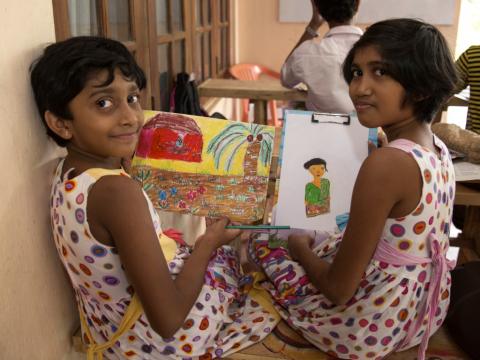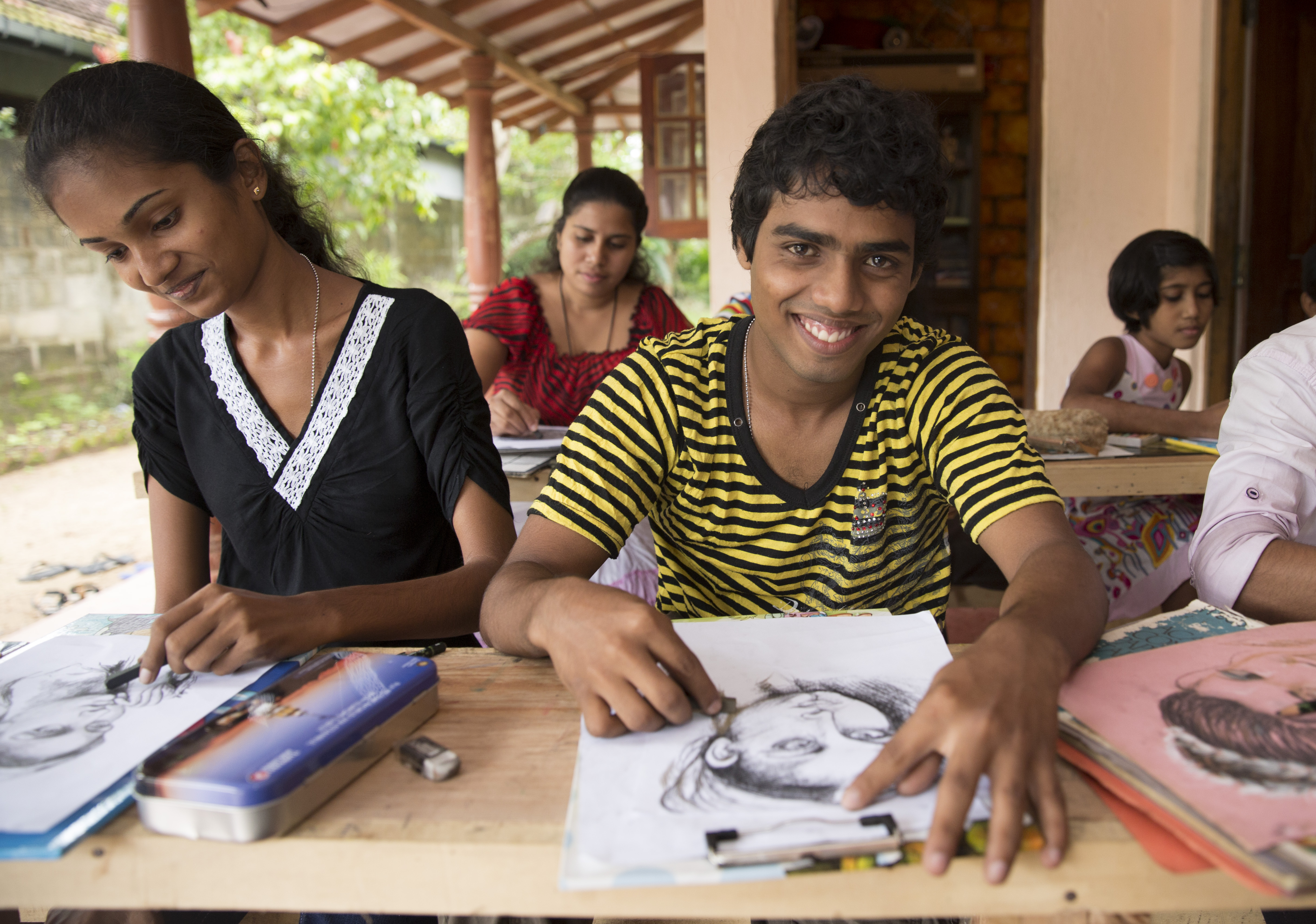An art movement starts

From the time he could recognize colours, Asanga (now 38) knew his life would be blended with it. From the time he could hold a chalk he began to scribble patterns on a little blackboard at home. As his passion grew, any clear surface would suffice for him to draw a picture.
“Any picture I saw, I tried to draw– be it the elephant on a box of matches or a picture on a discarded paper, I wanted to draw it,” he smiles remembering his childhood, “I would go through waste paper and collect all that had pictures.”
“I was fascinated with colour but my mother couldn’t buy me crayons or drawing paper, so I began to use mud and charcoal mixed with water to colour my pictures. After we lost our father, it was even a challenge for my mother to feed the ten of us at home with her little business selling stringhoppers [rice noodles served with coconut] to shops,” he says.
I was fascinated with colour but my mother couldn’t buy me crayons or drawing paper, so I began to use mud and charcoal mixed with water to colour my pictures.
“But once the water dried, the charcoal and the mud fell off the paper, so then I began to mix it with glue,” he recalls, “on rare occasions I fount discarded paint tins with a bit of hardened paint that I used kerosene oil to make it liquid again.”
He was only 10 when he first got paid for his skill in painting. It was after he drew a name board for a small shop. At the age of 13 he dropped out of school because of the difficulties at home and decided to continue painting pictures and selling them.
By the time tsunami happened in 2004, Asanga had already opened a small shop showcasing his paintings in a tourist beach area closer to home and the income was better. He was also giving drawing and painting lessons to school age children in his village.
“The day the waves came I had about about Rs. 600,000 (about USD$450) worth of paintings in my gallery and some of my best amongst them. Everything got washed away. I was very sad initially, but when I saw big hotels completely destroyed, people who had lost their homes and some even the loved ones, my loss looked very small,” says Asanga, “I decided that day that I would restart and rebuild my life and help others too.”
But the determination was crushed a few weeks later when he lost his elder sister, whom he loved the most, very suddenly. It completely threw him off balance.
Meanwhile World Vision was already working in the relief camps in his area and had called for applications from those who could assist children in drawings and art in the Child Friendly Space.
To distract him from pain, Asanga’s friend forced him to apply. “I remember going to World Vision office looking so disoriented. My hair was not combed, my shirt not properly tucked in, I was a sight. I didn’t speak a word during the interview and just stared blankly.
“The staff looked at me with concern but still hired me. To this day it’s a mystery to me how he didn’t judge me by my appearance but allowed me a chance. But that was also the beginning of my rebirth and the first step in my transformation.
I found my vocation to work for the vulnerable children and to teach art no longer as a subject but a mode of expression.
Asanga worked with tsunami-affected children in the World Vision Child friendly Spaces, helping them to express their fears, pain and hope through art. He also initiated the “Sithuvili Siththam” (paintings of thoughts) art exhibition that displayed over 300 drawings by tsunami-affected children in the district.
“Working with World Vision changed me,” he says, “I watched in amazement how they treated and behaved with children and learnt from them. All this while I saw children only in the form of students, but now I began to relate to them deeper and my attitude towards them began to change. I found my vocation to work for the vulnerable children and to teach art no longer as a subject but a mode of expression."
Asanga’s passion still leads him to visit poorest of the poor schools in different districts offering free drawing lessons for students. He also offers his services to orphanages and children with mental and physical disabilities. All for free. The only gift he would accept is school items that he can distribute to children from the poorest schools he visits.
He still paints and his income still comes from the paintings he sells.
“The first easel I got was from a World Vision staff and that’s what I still use,” smiles the artist, “we had many organisations that assisted us during the disaster, but World Vision is the only organization who not only assisted, but also changed us. What I am today is what I’ve learnt from it.”

